 Aberdeen Chinese Studies Group | sitemap | log in Aberdeen Chinese Studies Group | sitemap | log in
|
 |
||||||||||||||||||||||
| This is a free Spanglefish 1 website. | ||||||||||||||||||||||
MEETINGS 2011/2012/2013 Planned Meetings May 2013 Joanne Finley Smith, University of Newcastle, "Muslims in China" (maybe general topic, not actual title), Wednesday, May 1st, 3-5 p.m., CB 203. In partnership with Department of Divinity. Dr. Smith Finley obtained her BA Honours in Modern Chinese Studies at the University of Leeds in 1991. For three years between 1992 and 1994, she studied Japanese language and culture, and taught English in Kyoto, Japan. She then returned to the UK to pursue an interdisciplinary PhD in Chinese Studies / Social Anthropology at the University of Leeds, funded by the Economic and Social Research Council, UK, and including a year of ethnographic fieldwork (informal interviews and direct observation). Her thesis focused on changing identities among the Muslim Uyghur nationality of Xinjiang, NW China, and contemporary Uyghur-Han relations (June 1999). Between 1997 and 1999, she worked as a teaching assistant on undergraduate Chinese language and postgraduate Chinese-English translation modules for the University of Leeds, before joining Newcastle University as Lecturer in Chinese Studies in January 2000.
Professor Jane Duckett, Edward Caird Chair of Politics, Glasgow, May 15th, topic and venue TBA. In partnership with Department of Politics and International Relations Jane Duckett is Edward Caird Chair of Politics and Director of both the Scottish Centre for China Research and the Confucius Institute at the University of Glasgow. Her early research on the Chinese state under market reform included a book-length study, The Entrepreneurial State in China (Routledge, 1998). It explained state business activities as the outcome of fiscal and staffing constraints on officials in an institutional context of poorly defined property rights. Jane also (with colleague Bill Miller) made a comparative study of public attitudes to openness in East Asia and Eastern Europe, published as The Open Economy and its Enemies (CUP, 2006). Her current research is concerned with the politics of China’s social policy making and implementation. She argues through studies across a range of social policies (on local social welfare financing, health insurance, poverty and unemployment), that the politics behind them and their enormous redistributive consequences make them central to the Chinese state’s marketising project. Her recent monograph, The Chinese State’s Retreat from Health: Policy and the Politics of Retrenchment (Routledge, 2011) draws on comparative political theory to explain the Chinese state’s retrenchment in health care provision. She has also recently co-edited (with Beatriz Carrillo), China’s Changing Welfare Mix: Local Perspectives (Routledge, 2011), a book that takes a local perspective on China’s evolving social welfare provision. Jane has worked as a policy and social development consultant on a number of internationally-funded aid projects in China. Her previous research has been funded by the ESRC, Leverhulme Trust, British Council, British Academy, and the European Commission. In 2012 she received the Lord Provost of Glasgow Education Award. Prof Duckett recently published a paper on "China's leadership Transition", in Political Insight, a magazine of the Political Studies Association.
Report of Meeting, Tuesday, February 26th 2013 Professor Paul Dukes New Towns for Old: Some Views of Tianjin and Harbin. Professor Paul Dukes was Professor of History, Aberdeen University, 1988-99, Emeritus Professor, since 1999; Advisory Editor, History Today. He publishes widely on aspects of Russian, American, European and world history. NEW TOWNS FOR OLD: TIANJIN AND CHANGCHUN
Professor Paul Dukes visited China twice, in April-May 2005 to the town of Tianjin, the seaside resort of Beidahe and the Great Wall and in September 2012 to the towns of Tianjin, Changchun and Harbin.
Monday 10 September is 'Teachers Day', with many ceremonies on English-language CCTV including much bowing and many flowers, somewhat reminiscent of the Russian 1 September, and appropriate for my first seminar. Wednesday 12th September . Tianjin has a total population of about 12 million (more than twice Scotland), but not all around today because certain categories of traffic have been forbidden because of World Economic Forum (concentrating on growth). See traffic police extracting fine for infringement. There were nine concessions. The British Concession area has changed a lot since 2005. The hospital has become a church again, with wedding pictures being taken as part of campaign to jazz them up. The Synagogue was empty in 2005, then a restaurant, now a club. In 2005, not allowed to take photo of English Tientsin Club because it’s now For People’s Political Consultation. Cinema replaced by Concert Hall. Kiessling’s Food Shop still there, but very expensive. Cakes not so good as 2005. A reproduction of Constable’s ‘Hay Wain’ as well as of a concession ceremony is in the hall along with a photo of the founder. (During the Cultural Revolution, it was known as the Workers’ and Peasants’ Dining Hall.) We eat at Subway. Saturday 15 September. Teaching session. As part of the discussion of the role of the individual, the members of the class give their heroes: FDR, Abraham Lincoln, Mao, Frederick the Great, Marco Polo, John Forbes Nash, Tolstoi and Victor Hugo (who apparently denounced British and French sacking of Summer Palace.). Bright lights and noise in supermarket overwhelming. Upmarket jade boutique next door. I like a piece of jade with the hand of the Buddha and a bat on it for 3200 Yuan. Heather tells me to show doubt rather than enthusiasm. After several phone calls, much use of electronic calculators and a walkout for about an hour, we get it for 500 Yuan, although credit card machine will not work. Struggle through security and heat to train for Haerbin. After some time, country opens out with large fields. Sunday 16 September. Changchun more open than Tianjin, as well as smaller. Traffic easier. Visit to Pu Yi’s Imperial Palace, and gardens. No time, fortunately, to see exhibition of Japanese occupation. As we’re leaving, lots of police and army gathering for anti-Japanese demo. Monday 17 September. Students from Russia (Tomsk and Volgograd), Armenia, Kazakhstan, Kyrgyzstan, Lesotho, Nigeria, Pakistan, Portugal, Senegal, Cambodia, Ethiopia, Venezuela, Brazil, Chile, Peru, Argentina. Speak at class with Argentinian girl who is proud of her grandmother, the daughter of a Protestant missionary from Bath. She herself RC. Malvinas war scared government off more serious conflict with Chile. Lesotho man proud of being in Commonwealth. Saturday 22 September. Off to Haerbin. Drive along dual carriageway to Black Dragon River Province. Haerbin large, busy and smoggy. Search for former St. Sophia Cathedral now museum. Russians still living here say girls at information desk, but don’t see any except perhaps for one or two of mixed descent Even longer search for ‘Jewerish church’ . Past beer hall to old street festooned with lines of matchmaker cards. Evening walk along riverside Stalin Park, with many people enjoying an evening stroll or PT or roller-skating. A group wants to know where I’m from and a woman taps me on the stomach and says I should visit her health salon. Luxurious hotel. Sunday 23 September. Early morning walk in Stalin Park, where mass and individual callisthenics. Western breakfast with cornflakes, fruit and coffee. We agree not to walk around Sun Island Park where Ice Lantern Festival takes place in January but proceed to Siberian or Manchurian Tiger Park, where gaudy Disneyland meets dowdy zoo. Man buys live chicken for 60 Yuan to throw to those in cages after taunting them. Excellent ring road once we find it after taking wrong turning along another under construction. Stop for lunch at roadside restaurant, OK except for floor covered in debris. DVDs, toiletries and snacks for sale. Fruitless search for new suitcase in huge mall.c Chinese students do not revere ancestors, but have some respect for their elders, including Grandad from Aberdeen. Limited acceptance of Confucius on stages of human life.
Report of Meeting Dr.Isabella Jackson Rethinking Colonialism in China: the Shanghai Municipal Council, 1900-1943 Dr Jackson is a lecturer in the Department of History, University of Aberdeen. She researches the modern history of China and the global and regional networks that shaped the treaty ports, which were opened to foreign traders by force, in the nineteenth and early twentieth centuries. Dr Jackson drew a concise yet comprehensive picture of this fascinating and relatively unexplored subject, her aim being to suggest a reconsideration of the way in which colonialism in China has been presented. She began by highlighting the fact that many people, when thinking of the British colonies, tended to concentrate on the larger colonies in Africa and India. However, in the case of Shanghai, size did not matter! Prosperous Shanghai was the centre of the British colonial presence in China with a larger British civilian population than Hong Kong.’ Dr Jackson described how the small International Settlement of Shanghai was established in 1843 in accordance with the Treaty of Nanjing at the conclusion of the first Opium War. The expected outcome was that traders - predominantly British - would settle there temporarily, using the settlement as a trading base. She described with great clarity the development of the Shanghai Municipal Council (SMC)- which emerged from the Committee of Roads and Jetties - and the extent of the British dominance within it. Shanghai was unique among treaty ports in that the SMC wielded more power than the resident consular body creating, by the 1920’s, a source of antagonism and frustration detrimental to relations with China The primary departments of the SMC were the Secretariat, Finance, Police, Public Works and Health with smaller departments for Education and Industry. The SMC employed the largest number of British personnel in Shanghai who also occupied the majority of senior positions. The Secretary of the council was the most highly paid employee and wielded enormous power. J.O.P Bland Secretary (1897-1906) and Stirling Fessenden (Secretary1929-1939) were considered more powerful than the chairmen of the council. Men exercised most control and influence with Eleanor Hinder, employed as Director of the Industrial Section, being the only female to head a department. The Shanghai Municipal Police (SMP), the largest municipal department, employed more than half of the total staff. Although ostensibly an international force with Sikh, Chinese and Japanese branches, the power continued to lie in the hands of the British.The council’s power was also supported by the Shanghai Volunteer Corps (SVC), whose companies were organised by nationality. Although the SMC was dominated by the British, the Chinese were not solely, ‘passive victims of imperial oppression’ and eventually, by 1928, played an active part alongside other international representatives, e,g, British, American and Japanese. The Chinese and Japanese council members lobbied hard for increased spending on issues advantageous to their respective communities, e.g. education. The strictures on eligibility for election to the council meant that it largely drew its membership from wealthy landowners and big companies. Prominent among these were employees and/or family members of Jardine, Matheson and Company; the Peninsular and Orient Steamship company, Butterfield and Swire, British American Tobacco, etc. The longest serving settler chairman was Stirling Fessenden. Although an American he was considered to be ‘more British than the British’ - making him unpopular with the American consular authorities. Most notable among the Chinese members of the council were Yú Xiáqīng, Chairman, Chinese Ratepayers Association, president of Chinese General Chamber of Commerce; Xí Xīnliū, Director of the National Commercial Bank in Shanghai; Chén Tíngruì graduate of Michigan law school. Dr Jackson concluded by commenting that although the council was dominated by British influence from its establishment in 1854 up to the 1942 resignation of the British members, there was always an element of internationalism - albeit confined to particular national and elite groups. Her final slide was of the Municipal Flag - a combination of British, American, German, French, Danish, Russian, Italian, Portuguese.Spanish, Austrian, Dutch, Swedish and Norwegian flags with the motto, ‘ omnia juncta in uno’ (all joined in one).
Report of Meeting October 2nd 2012 5.15pm Room F61, Edward Wright Building,Old Aberdeen
Dr Chia-ling received her first degree in Chinese Literature from the National Taiwan University, an MA from Art History at the University of Warwick and her PhD at the University of London (SOAS) in Art and Archaeology. She was visiting scholar at the Academia Sinica (Taiwan, 2000) and the University of Heidelberg (Germany, 2001-02), and was awarded a postdoctoral fellowship to research and teach in Art History at the University of Chicago (2003-04). Yang was Lecturer in Chinese Art at the University of Sussex (2004-07) and University of London (SOAS, 07-09) before she arrived in Edinburgh. She also lectures at the V & A and the British Museum on Chinese Painting. Dr Yang researches principally on the Chinese painting, archaism in modern Chinese art, visual culture in Shanghai and its interactions with Japan and the West in 19th and 20th centuries. She welcomes research students who are interested in Chinese painting and calligraphy, cross-cultural artistic production, and the visual culture of modern/contemporary China.
Sexuality and Patronage in Art of Shanghai
This richly illustrated talk called attention to the representation and significance of the courtesan in 19C Shanghai art. Dr Yang began by highlighting three recurrent themes in which the courtesan figured either as a source of inspiration or sponsorship:- · Stories of historical figures sharing musical pleasures with concubines or courtesans · Three chivalrous travellers · Looking at the Deserted Country Solemnly She posed two questions:- · Why did artists choose these subjects? · Who were the audience/patrons? Artists chose these subjects for a number of reasons:- · To demonstrate not only the beauty of top-ranking courtesans but also their intellectual capabilities. (N.B - there were four ranks of courtesans). · To show the variety of pleasure gardens/quarters and demonstrate their significance as the basis for the work of both the courtesan and the artist. (N.B - there were eight forms of entertainment). · To thank or flatter patrons, e.g. portraits annotated with praise of the sitter There were a variety of patrons:- · Immigrant patrons · Overlapping patrons – art collectors, pleasure quarter patrons Dr Yang drew an interesting comparison between the work of the Shanghai artists and the French Impressionists who also used prostitutes as models and muses and brothels as both home and studio.
As the century progressed, photography gained in popularity and early photographers treated their subjects in a similar fashion to traditional painting. Eventually though, photographs of courtesans could be found in pleasure quarters, forming a kind of beauty queen competition for the ‘best’ courtesan.
Tina Stockman
Treasurer/Publicity and Communication Aberdeen Chinese Studies Group
After the recent AGM, there have been some changes to the committee. They are as follows:- Honorary President: Sandy Hamilton Secretary: Dr Norman Stockman Chairman: Martin Mills Treasurer: Tina Stockman
Dr Isabella Jackson - a new face for the committee. Dr Jackson will be joining the History Department in September 2012. Judith Thrower Jim Suttie Tuesday, May 15th 2012 University of Aberdeen
MacRobert Building (Faculty of Education, King Street)
Dr Li, Ruru, Department of East Asian Studies, University of Leeds.
Dr Li's research interests lie in performance art, comparative and intercultural theatre studies. Dr Li, Ruru acquired her BA and MA at the Shanghai Theatre Academy and her doctoral degree in Drama and Theatre at the University of Leeds, UK. Brought up in a Beijing Opera actress family, she received some basic training when she was ten. Her research interest lies in performance art, comparative and intercultural theatre studies. She also performs Beijing Opera and runs various workshops. She regards regular contact with the theatre as essential to her academic work.
Tina Stockman
Publicity and Communication Aberdeen Chinese Studies Group May 2012 ---------- Tuesday, April 24th 2012 University of Aberdeen Room F61, Edward Wright Building, 5.15pm Pofessor Wang Li China's Client Status in a Europe-Dominated World System Professor Wang Li works in the Department of World History, Nankai University. He was educated in China, the United States and United Kingdom, with academic training covering World History, International Relations and European Studies. He is also an adjunct professor at the Institute of International Studies, Jilin University.
Professor Wang Li’s talk was both erudite and entertaining. It raised some very appealing and optimistic points about the relationship between
Professor Wang’s argument included the following questions:-
· What had China learned from their past when they started to deal with
Europe ?
· Why was was China regarded as a client, in some way unequal and/or weaker than European counterparts?
After defeat by
Professor Wang contended that in 1978, after Mao, the new Chinese government had to make a choice between being decent (i.e. acting responsibly towards the indigenous population, promoting economic growth) and being powerful (building up military forces and resources, looking to extend borders). Professor Wang feels that
There was now a new generation of post-revolutionary leaders, the ‘technocrats’ – possibly less visionary and more inflexible than leaders of the past. The commitment, however, remains to promoting the two ‘P’s’ – Peace and Prosperity.
Problems remain. The rapid expansion in economic growth and development has lead to some corrupt practices – particularly in the area of urban development investment. The gap between rich and poor remains an issue. Intellectuals and academics although better qualified and paid, are less confident in the government. Some educate their children in the
A greater threat to
With so many domestic problems, Professor Wang suggested that perhaps it is best that
Tina Stockman
Publicity and Communication Aberdeen Chinese Studies Group April 2012
University of Aberdeen Room F61, Edward Wright Building, 5.15pm Professor Stephan Feuchtwang When civilisation becomes national: traditional selfcultivation and the multiplication of moral personality in the PRC
Professor Stephan Feuchtwang is an emeritus professor of the Department of Anthropology, London School of Economics. He has been engaged in research on popular religion and politics in mainland Abstract: The moral person - abstract
My topic is the formation, externally and internally of moral persons in the conditions under which a civilisation is turned into a self-conscious nationality. Nation-formation is pursued by intellectual and artistic elites especially once they have at their disposal a powerful state. In this presentation I stress the pedagogical mobilisation of versions of what are supposed, in the new narratives of nationality, always to have been the abiding character of the people of that nation. These pedagogies of moral personality are learned through their own aspirations by subjects who also have at their disposal other transmissions from the recent past and the further past of Chinese civilisation. I ask whether continuity of these traditions of self-cultivation are compatible with the pedagogy of continuity. I also stress the multiplication of inconsistent formations and cultivations of personhood in
NB There is a fascinating video of Professor Feuchtwang talking about his life and work on YouTube.
Tina Stockman
Publicity and Communication Aberdeen Chinese Studies Group February 2012
---------- Tuesday, 17th January 2012
University of Aberdeen
The Effect of Tibetan Buddhist Culture on the Conservation Behaviour of Communities in Western China
Local gods, karma and morality – religious relationships with the environment in a Tibetan Buddhist community (revised title).
Emily Woodhouse’s research interests lie in understanding the links between social institutions, culture, livelihoods and natural resource management with the aim of developing successful conservation strategies which benefit local communities and biodiversity. It is funded by the ESRC with CASE funding from the World Pheasantry Association. Emily Woodhouse won second prize at the 2011 Student Conference on Conservation Science,
Ms Woodhouse’s current research examines the effect of Tibetan Buddist culture on the conservation behaviour of communities in
Interdisciplinary research methods drawn from both the social and natural sciences were used to examine the effects of Tibetan Buddhism on a small agro-pasturalist society made up of nomadic cattle-herders and settled farmers. Research data was gathered through ethnographic methods (formal interviews, relaxed conservations and observation of daily life); natural sciences (structured questionnaires, land-use surveys) and satellite imaging of forests.
With reference to Emile Durkheim’s definition concerning the fusion of religion, society and the natural world, Ms Woodhouse explained the nature of the worldy gods (i.e. unpredictable and often malevolent); their relationship with the natural world (i.e.weather) and the influence of appeasing them through everyday action and ritual. The tripartite ordering of Tibetan cosmology was illustrated with a Tibetan Buddhist mandala – a cosmic ‘diagram’ displaying the hierarchy of the deities.
Local attitudes to conservation were mixed. For example, nobody actually took protective action within the community - this was reserved for outsiders; land rights over areas where the highly lucrative caterpillar fungus was gathered created serious (and even violent) boundary issues; conflict over natural resources tended to be about boundaries and was not of a religious nature; no need was felt to impose institutional punishment for breaches in traditional conservation practice.
Alluding to Karma (loosely, the force of all a person’s acts -- good or evil – in shaping his/her destiny) Ms Woodhouse discussed the potential environmental influence of the Karmic effect, citing examples such as the ritual release of animals and the protection of plant forms.
Ms Woodhouse went on to describe in detail interconnections between humans, the landscape and the gods and how ritual was tied to everyday life.However, throughout the talk, Ms Woodhouse emphasised the capriciousnes of the gods and the inconsistency in human interpretation of their (the gods) demands. Also, the demands of market forces now impinge on the maintenance of sacred rites and sacred sites.
Tina Stockman
Publicity and Communication Aberdeen Chinese Studies Group January 2012 ---------- December 13th 2011 University of Aberdeen Edward Wright Building, F61 Julian Ward, Senior Lecturer in Chinese Studies, University of Edinburgh Michelangelo Antonioni’s Chung-kuo (China) and its reception in China and Europe. In 1972, in between Zabriskie Point and The Passenger, Antonioni was invited by the Mao government of the People's Republic of China to visit the country. He made the documentary Chung Kuo, Cina, but it was severely denounced by the Chinese authorities as "anti-Chinese" and "anti-communist".The documentary had its first showing in China on November 25, 2004 in Beijing with a film festival hosted by the Beijing Film Academy to honor the works of Michelangelo Antonioni. Julian Ward is Course Organiser for Chinese Literature and Associate Editor of the Journal of Chinese Cinemas. He is currently teaching courses on both traditional literature, including Tang and Song poetry and Ming vernacular fiction, and modern poetry and literature. Dr Ward has published extensively in the field of Chinese Film, most recently The Chinese Cinema Book.
Short excerpts from this four-hour long film can be found on YouTube - including (for those with a strong constitution) an acupuncture assisted Caesarian birth and a performance by a group of acrobats.In 1972, in between Zabriskie Point and The Passenger, Antonioni was invited by the Mao government of the People's Republic of China to visit the country. He made the documentary Chung Kuo, Cina, but it was severely denounced by the Chinese authorities as "anti-Chinese" and "anti-communist".
Tina Stockman
Publicity and Communication Aberdeen Chinese Studies Group
December 2011 November 8th 2011 University of Aberdeen Anthropological Museum Marischal College Neil Curtis, Head of Museums, University of Aberdeen A (Chinese) Night at the Museum Neil Curtis is Senior Curator in Marischal Museum where he has worked since 1988 and Honorary Lecturer in Anthropology. He studied Archaeology (Glasgow, 1986), Museum Studies (Leicester, 1988) and Education (Aberdeen, 1995). He has responsibility for the wide range of Marischal Museum’s collections (Scottish history and archaeology, European and Mediterranean archaeology, Non-Western ethnography, Numismatics and Fine Art), with a particular regional interest in the material from Scotland and Canada. Exhibitions he has curated include Going home: museums and repatriation (2003), Fiddles High and Low (2001), Inuit in Aberdeen (2000), The Bronze Age: an idea of prehistory (1996), Barbarians Entwined: Picts, Scots and Vikings (1995).
The 2011/2012 opening meeting of the Aberdeen Chinese Studies Group proved to be an enjoyable and enlightening event. Neil Curtis, Head of Museums, University of Aberdeen, opened the currently closed Anthropological Museum at Marischal College to the group in order to see items in the Chinese collection. He began the meeting with a brief history of the museum explaining how objects came to be found there in the first place. This could have been due to travellers bringing back artefacts either for themselves or as gifts – or even collectors acquiring items, shall we say, through stealth!
Tina Stockman
Publicity and Communication Aberdeen Chinese Studies Group November 2011 ---------------------------------------------------------------------------- GALLERY
Aberdeen Chinese Studies group acknowledges support from the Confucius Institute for Scotland
|   |
|||||||||||||||||||||
 | ||||||||||||||||||||||
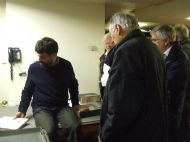
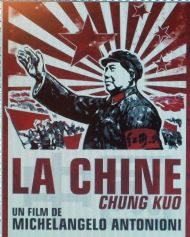
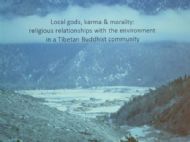
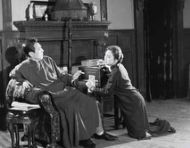

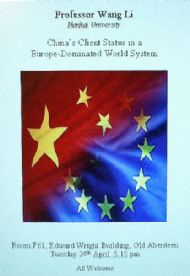

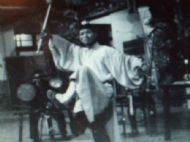
.jpg)